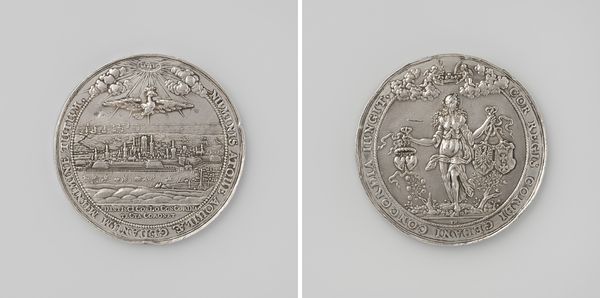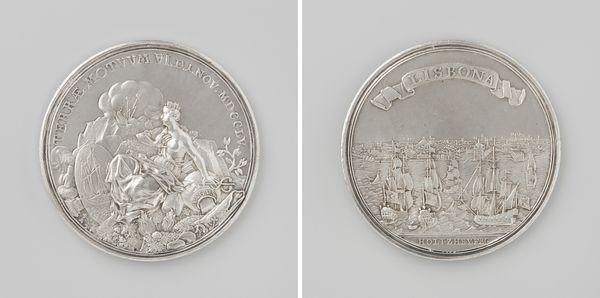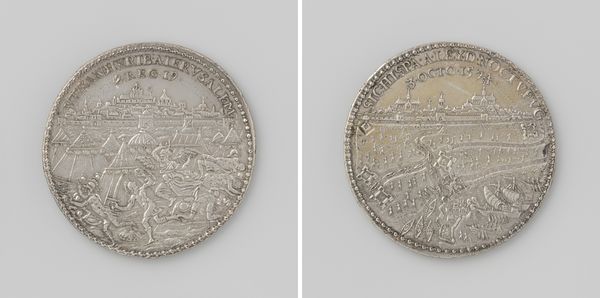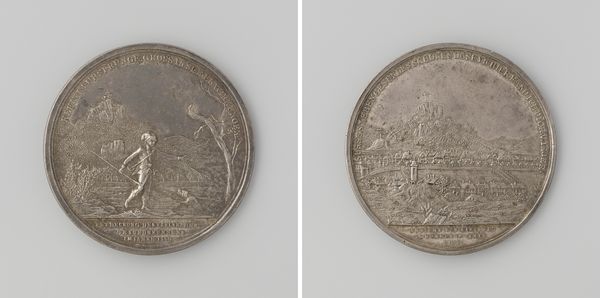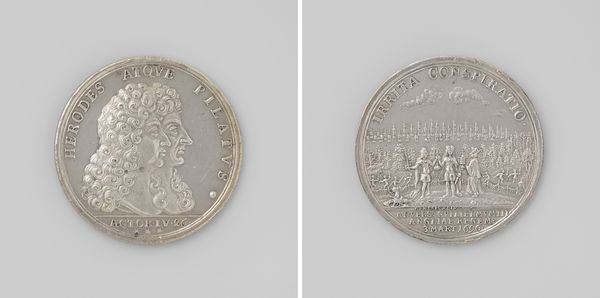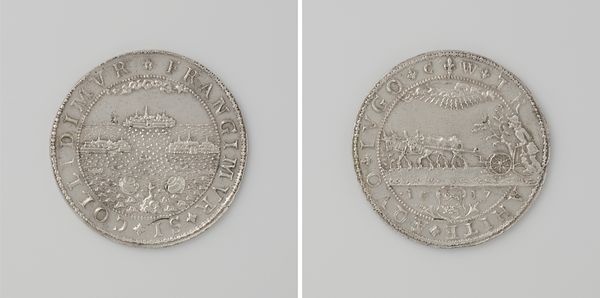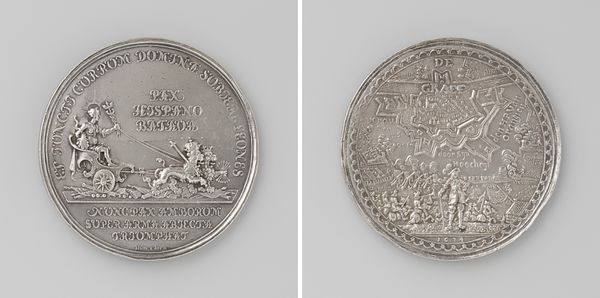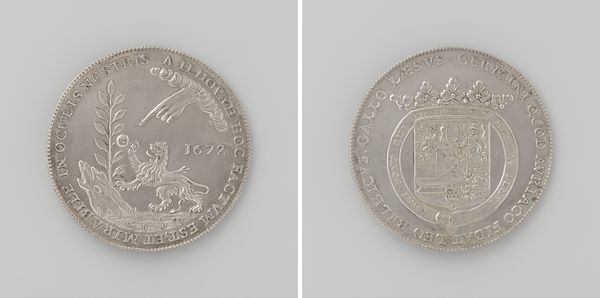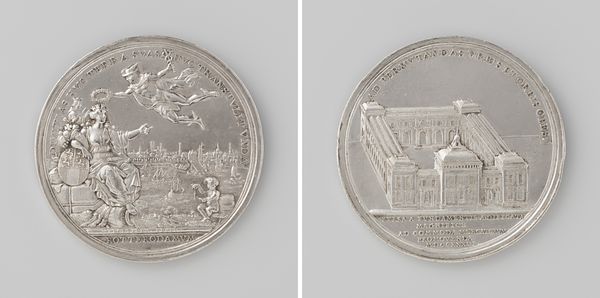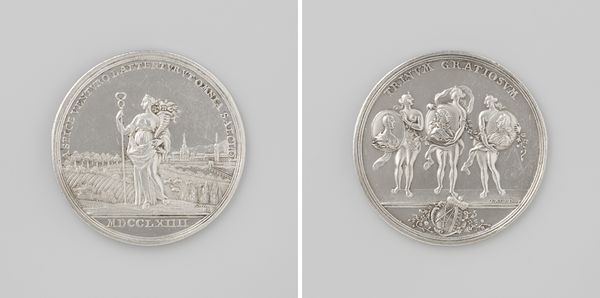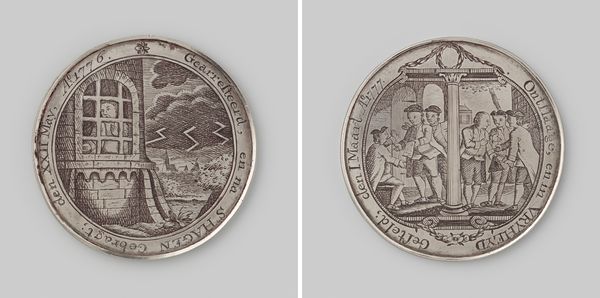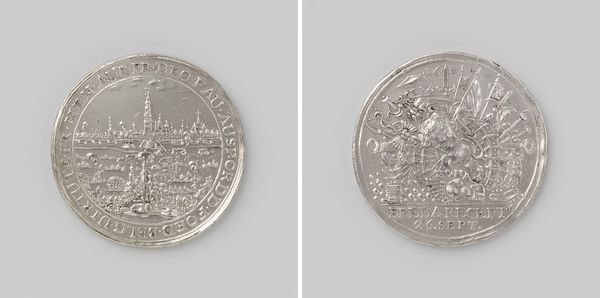
print, metal, engraving
# print
#
metal
#
old engraving style
#
woodcut effect
#
11_renaissance
#
linocut print
#
cityscape
#
northern-renaissance
#
engraving
Dimensions: diameter 3.5 cm, weight 18.84 gr
Copyright: Rijks Museum: Open Domain
Curator: What a fascinating object. This is a Northern Renaissance engraving by Paulus van Wtewael, dating back to 1588. It's entitled "Aansporing tot eendracht," which translates to "Incentive to Unity." Editor: My first impression is one of duality, even conflict. The two sides present starkly different realities. There's a laboriousness evident on one face of what appears to be a metal token and what I presume might be an ideal image. The other appears a flooded town that doesn’t look very ideal at all. Curator: Precisely! The artwork offers a dual narrative typical of the time. One side displays an agricultural scene of oxen plowing a field—a representation of labor, perhaps even an idealized past and prosperity through traditional work and life. Editor: I can see that labor, yes. The detail on those oxen and the texture of the earth are remarkably rendered, especially given the constraints of engraving metal. But what strikes me is the physical process of creating this image—the artisan’s labor, the value embedded in the materials, especially metal, being circulated like the message it bears. Was the metal precious? How would the making of this token contribute to that idea of unity? Curator: That’s an excellent point. Tokens like these circulated, serving a propagandistic purpose during times of conflict, and as collectables thereafter. Consider the turbulent political landscape of the late 16th century, specifically the Dutch Revolt. This piece isn't merely decorative. It reflects a call for solidarity within the fractured Netherlands against Spanish rule. The materials here facilitate a portable, reproducible message to be spread across geographical divides. Editor: And the other side speaks to that discord? A flooded cityscape? It appears to be overwhelmed. Is that division by outside forces, or does the flooding speak to a fracturing from within, society as a whole succumbing to destructive forces? Curator: Likely a visual metaphor. A flood could represent internal strife and discord as much as a natural disaster. Given the title and the historical context, I'd say the flood alludes to the dangers of disunity. It highlights what might happen when different parts of the society don't act in unison. This sort of messaging of togetherness also extends to shared markets and collective work like on the first half of the token. Editor: The level of detail in capturing that vulnerability—the overwhelmed city in comparison to the industrious land reminds me how artworks like this reflect not only cultural but also social labor that seeks out the means to present certain views as natural or superior. Curator: Yes. The pairing creates a strong message when distributed among the populace. The unity advocated for on one side is shown in stark contrast to the societal collapse should people or industries divide on the other, even centuries after its creation. It serves as a stark visual commentary. Editor: Well, examining the interplay between material production and historical messaging has given me a new appreciation for this coin’s message as a call for stability and what costs social disunity. Curator: And for me, it highlights how artifacts like this served as powerful political tools shaping perceptions and encouraging a collective identity during the Renaissance, reminding us of the enduring relevance of art within socio-political movements.
Comments
No comments
Be the first to comment and join the conversation on the ultimate creative platform.

